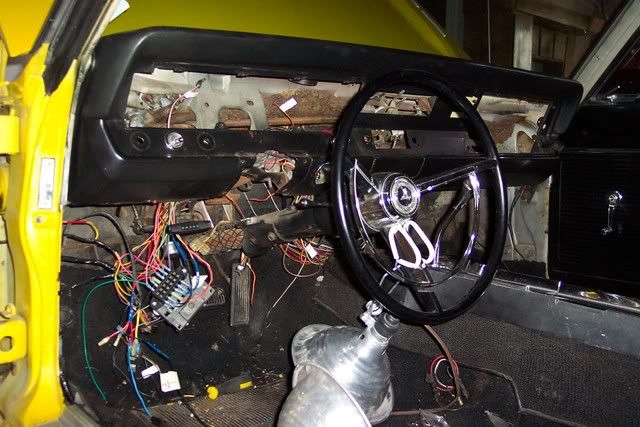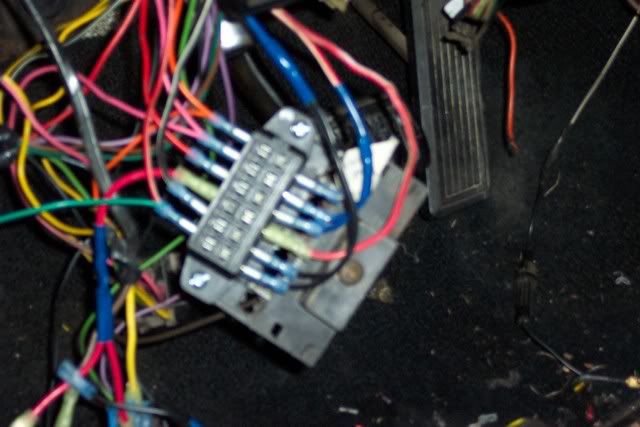This sounds to me like multiple problems.
I assume by now you have downloaded one of the free shop manuals and wiring diagrams??
I would approach this in two steps:
1. Go through the car wiring FIRST and look for obvious and KNOWN problem areas.
That is.......pull apart and inspect the bulkhead connector. If you are not planning on re--wiring the whole car at this time, fix it by replacing individual connectors, cleaning ones that can be save, and on the big high--current conductors, you might consider biting the bullet, and running wire for the ammeter circuit straight through
Go through the lighting from stem to stern. Clean the sockets, inspect the lamp contacts, clean them, and dope them liberally with dielectric grease, available at any electric supply outfit, or Lowes or Home Depot
Find and clean body grounds. Open the left kick panel and inspect and clean the connector for the tail lamp harness. If nothing else, pull it apart, inspect, and plug/ unplug the connector several times to "scrub" the terminals clean
Pull the trim below the column and pull apart and scrub the signal switch and the ignition switch connectors. You can check voltage through the switch by probing the one side of the connector when it's together. Check the battery buss going in (key off) against the accessory line and ignition line (key on) to check for drop through the switch and connector.
You need a multimeter and test lamp. Multimeters nowadays are not very expensive.
For a quick check on your charging problem, do the following things:
FIRST and foremost, remove the regulator, clean and wire brush the mount bolts, and use star washers to remount the regulator.
THEN TEST IT!!
There are two important circuits you need to test, the GROUND, and the HOT side of the harness
To test the HOT side, you will be testing for VOLTAGE DROP in the path from the
battery--fuse link--bulkhead connector--ammeter circuit--ignition switch connector--through the switch--back OUT the switch connector--back OUT the bulkhead (on the dark blue ignition supply buss)--to the regulator
To check this, turn the key to RUN, engine not running. Put one probe of your meter on the battery POS post, the other on the "key side" of the ballast resistor. A second place to check is the blue wire on the field of the alternator (There are two, blue, and green) You are looking for VOLTAGE DROP, so you are wanting to see a LOW reading, the lower the better.
IF the reading is much over .2V (two TENTHS of a volt) be concerned. If it approaches or is OVER 1/2 volt, get busy. Look for the voltage drop, in the path above. Your number one suspect is the bulkhead connector, second is the ignition switch or it's connector
NOW check the ground. Start the car, get the engine up to RPM to simulate "low to medium cruise"
Stick one probe on the battery NEG post, and stab the other probe on the regulator case. Be sure to "stab" through any paint, chrome, rust.
Here, once more, you are looking for a low reading. Over .2V is too much, and if over that, indicates a poor ground.
One good way to improve the battery--to block--to body ground is to buy a 1 ft starter cable (ring to ring) bolt it to the unused end of the driver side REAR head, and bolt the other end to the master cylinder stud. Clean and brush this clean, and use star washers
The second problem is a ground to the regulator. IF the body is rusty or the bolt holes stripped, you'll have to deal with that.


















